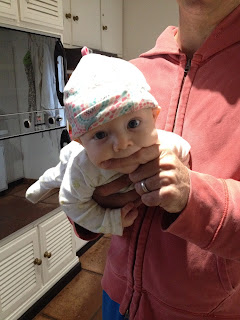In late June, I hosted my former PhD advisor Jim Clark for a couple of weeks of fieldwork in Mapungubwe National Park - one of the northernmost points in South Africa. The park sits right in the middle of the Tuli Basin - a 200 million-year-old depression that filled up with sand and mud at the same time the Karoo Basin was forming. In that basin lived dinosaurs, and we went to see if we could find their remains.
The Mapungubwe area is important for more recent reasons, too - the area hosted one of the great Iron Age civilizations of Africa, which had trade connections with far-flung places like China in the 10th century AD! This civilization was the precursor to the Great Zimbabwe civilization.
The Golden Rhino is the symbol of the park and an amazing piece of goldsmithing from people living in the area around 900-1200AD.
The visitor center for the park features amazing architecture. It was built using almost entirely local labor and completely local materials like gypsum and clay. The vaulted roofs were built on wooden frames using quickset plaster and the entire complex blends into the landscape.
Situated north of the tropic of Capricorn, the park is in a malarial zone, but since was winter and therefore the dry season, our risks of getting malaria were pretty low.
The park, and in fact most of the province of Limpopo, is known for these massive baobab trees. Here, our crew is gathered around the base of a particularly nice specimen. Baobabs are in the family Malvaceae, which includes more recognizable plants like cotton, okra, and chocolate. Baobabs are, however, more closely related to species like balsa (i.e., the wood used for those little balsa wood gliding planes).
The park is also known for its wildlife, especially elephant. The photo of the tusker above was taken from the back porch of my cabin and you can see the rearview mirror of our truck in the giraffe shot.
All this wildlife meant we had to be accompanied by an armed guard whenever we went out to look for fossils. This is Nkateko, a rather proud fellow who served as our ranger for the first week of the trip. He speaks 5 languages fluently and seemed capable of tracking anything.
Here's a close encounter with an ellie in a Mopane woodland near some choice-looking outcrop.
Nkateko even seemed proficient in speaking donkey, as evidenced by his ability to commandeer an errant a donkey cart that was blocking our road while the rest of us uselessly looked on.
One of the things Nkateko taught us was how to identify turds. On the left, next to a standard-sized rock hammer, is the spoor of a lion. They're typically black and full of hair. On the right, the beaten-up droppings of an elephant, which go way off screen and are full of grass and twigs.
These two panoramics show our accommodation for our first week in the park at the Tshugulu Lodge. Built out of stone and thatch in a natural grotto formed by towering sandstone outcrops, it was a beautiful place to stay each night. Highly recommended for anyone seeking a vacation in the area.
These bizarre plants towered over the pool at the lodge. I'm still working on an identification.
Our first week of prospecting wasn't particularly productive for dinosaurs, although we did find a few artifacts from the lost Iron Age civilization, such as this potsherd Nkateko is holding.
We didn't let the lack of dinosaurs or the appearance of some rainclouds get us down, however.
These photos show the thatched cottages and marvelous isolation of the Vhembe camp.
After a week of great scenery and wildlife (including a leopard sighting that I didn't photograph), we moved camp to the east side of the park, where we occupied unfenced cabins. Every night we were serenaded by hyaena, and most mornings we were fenced in by elephants grazing around our truck.
Once we moved camp, we met with some initial success in finding more complete specimens. Here were were able to piece together a dinosaur humerus from elements lying about on the ground.
We also managed to check out the Royal center of the ancient Mapungubwe civilization, situated atop a massive sandstone outcrop and accessed via a treacherous, winding stairway.
Still, good dinosaur fossils seemed out of reach. As the week wore on, we grew a bit desperate and we drove to a nearby croc farm. At this farm, named Rakwena, 14,000 nile crocodiles are raised for their skins and meat. Buyers from Italy (in recent years Gucci) visit the farm annually and buy their entire crop. Here, our guide on the tour shows us how to herd the breeding-age females.
My student Viktor holding one of the 1-year olds tightly. The skins are typically harvested from 4-year-old animals.
My student Kathleen in the pens where thousands of juveniles are raised together. Less than ten years ago, these pens were flooded by massive rains and a rising Limpopo river. More than 10,000 animals got loose and had to be recovered by the intrepid farmhands.
The growing crocs are fed a rather repulsive chicken-byproduct meal. Older crocs get whole chickens.
With our poor luck finding extinct dinosaurs, I turned my attention to the incredible diversity of living dinosaurs in the park. This is a Burchell's Coucal, a cryptic bird that lives even in Johannesburg but is notoriously difficult to photograph. Coucals are interesting because the male often provides most of the parental care.
Sadly, we found very few dinosaur fossils on our trip - so few that we won't be going back anytime soon. But on one of our last days, we were able to have a peek at these structures, hypothesized to be fossilized termite mounds from the Early Jurassic.































































